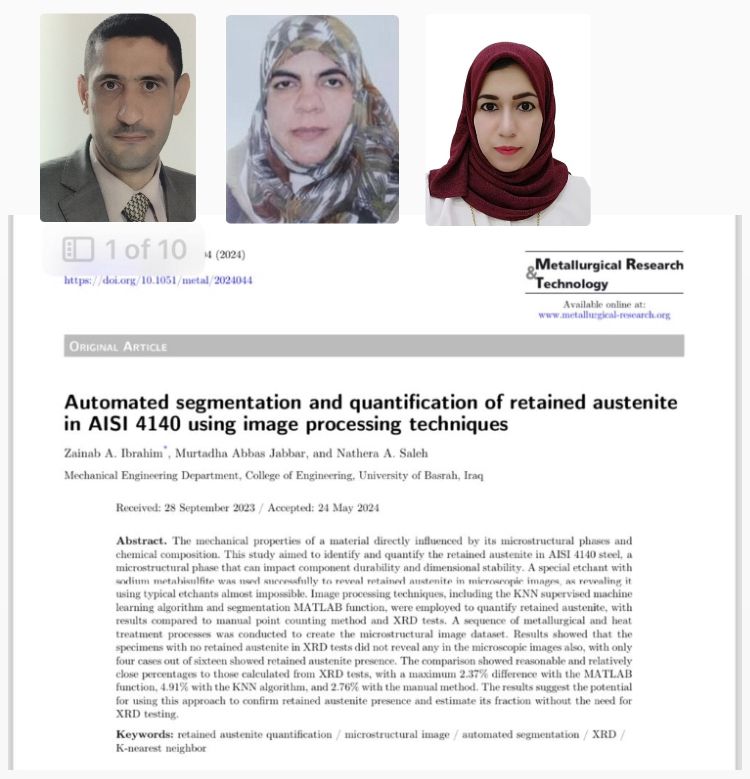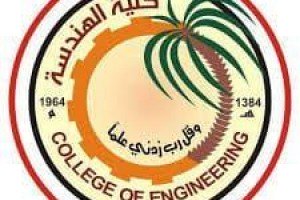Dr. Murtada Abbas Jabbar, Dr. Nazira Abdel Hassan Saleh, and doctoral student Zainab Abdel Karim Ibrahim from the College of Engineering, University of Basra, published a joint scientific research entitled Automated fractionation and calculation of the percentage of remaining austenite in low alloy steel AISI 4140 using image processing techniques in the journal Metallurgical Research.
Technology within the Scopus Q2 classification. The research included determining and measuring the percentage of remaining austenite in AISI 4140 steel, which is a microscopic phase that can affect the durability and durability of mechanical parts. A special demonstration solution containing sodium metabisulfite has been successfully modified and used to detect residual austenite in optical microscope images, where detection using conventional demonstration solutions is almost impossible. This solution darkened all the other microscopic phases and highlighted the austenite phase in a clear white color.
Image processing techniques, including the KNN machine learning algorithm and a special segmentation function in MATLAB, were used to determine the amount of remaining austenite. The results were also compared to a manual calculation method and an X-ray diffraction (XRD) test, which was adopted as a reference for other methods for its accuracy and reliability. A series of metallographic operations were carried out, such as heat treatment under different conditions, and sample preparation for microscopic examination and imaging.
The results showed that samples that did not show the presence of residual austenite in the XRD test also did not show it in the micrographs, with only four out of sixteen cases showing the presence of residual austenite. The comparison showed reasonable percentages that were relatively close to those calculated from XRD tests, as the difference reached 2.37% with the MATLAB hash function, 4.91% with the KNN algorithm, and 2.76% with the manual method.
The results indicate the possibility of using this method to confirm the presence of residual austenite and estimate its percentage without the need to perform the XRD test, which requires heavy equipment and highly scientific and experienced operators, in addition to its long-term harm to humans and the environment and its lack of availability in scientific buildings.





